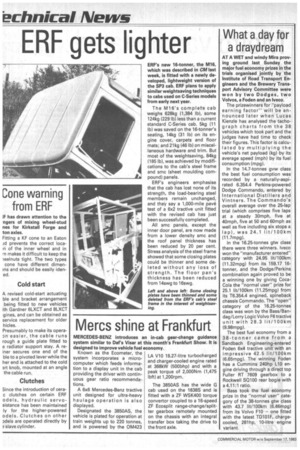ERF gets lighter
Page 12

If you've noticed an error in this article please click here to report it so we can fix it.
ERF's new 16-tonner, the M16, which was described in CM last week, is fitted with a newly developed, lightweight version of the SP3 cab. ERF plans to apply similar weightsaving techniques to cabs used on C-Series models from early next year.
The M1 6's complete cab weighs 628kg (1,384 lb), some 124kg (229 lb) less than a current standard C-Series cab. 5kg (11 lb) was saved on the 16-tonner's seating, 14kg (31 lb) on its engine cover, carpets and floor mats; and 21kg (46 lb) on miscellaneous hardware and trim. But most of the weightsaving, 84kg (185 lb), was achieved by modifications to the cab's steel frame and smc (sheet moulding compound) panels.
ERF's engineers emphasise that the cab has lost none of its strength, the load-bearing steel members remain unchanged, and they say a 1,000-mile pave test of a 6x2 tractive unit fitted with the revised cab has just been successfully completed.
All smc panels, except the inner door panel, are now made from a lower density smc and the roof panel thickness has been reduced by 20 per cent. Stress analysis of the steel frame showed that some closing plates could be thinner and some deleted without any loss of strength. The floor pan's thickness has been reduced from 14swg to 16swg.
































































































